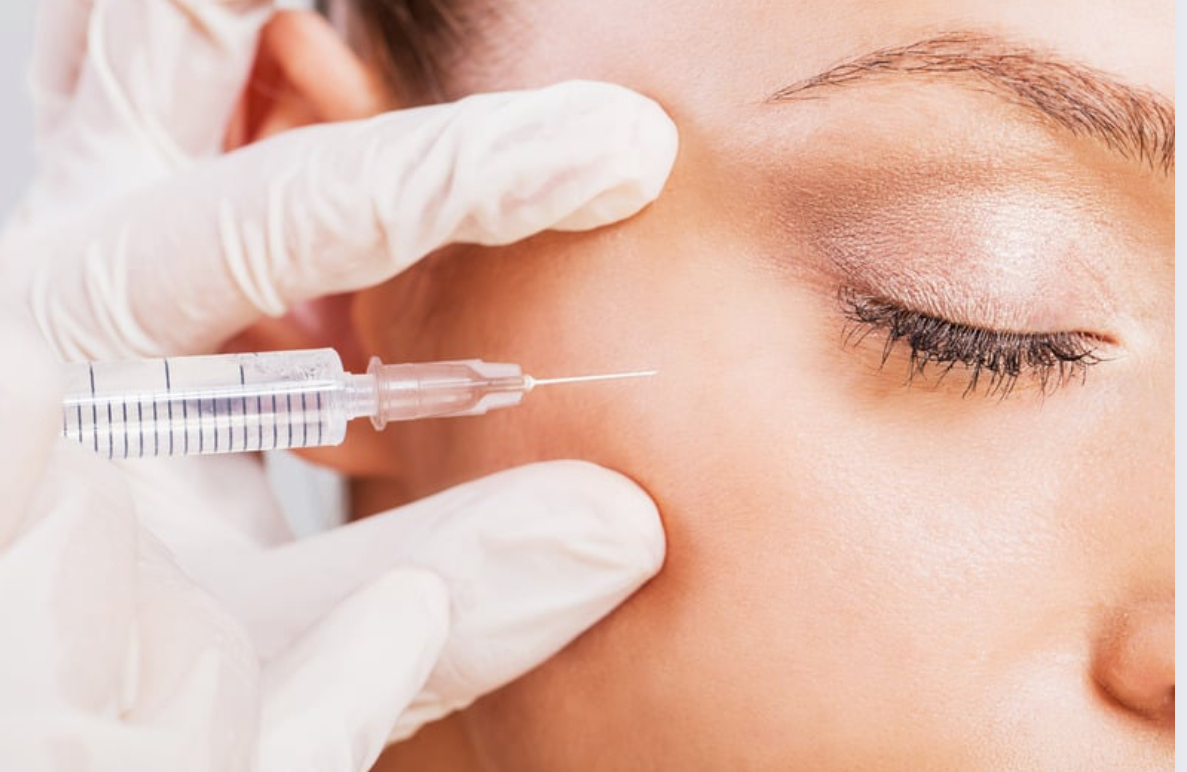Chemical Peels 101: How to Choose the Right Peel for Your Skin
Chemical peels sound intimidating, right? The word "peel" conjures images of red, flaking skin and days of hiding at home. But here's the truth: modern chemical peels range from gentle lunch-break treatments to more intensive skin transformations, and understanding your options makes all the difference. As experienced aesthetic practitioners who perform chemical peels daily at our Dublin medspa, we're breaking down everything you need to know about this powerhouse treatment, from types and benefits to what actually happens to your skin.
What Is a Chemical Peel, Really?
A chemical peel is exactly what it sounds like: a chemical solution applied to your skin that causes the top layers to eventually peel off, revealing fresher, healthier skin underneath. Think of it as a controlled injury that triggers your skin's natural healing and regeneration process. The "peel" part doesn't always mean visible flaking (though it can). Depending on the type and strength of peel, you might experience anything from mild dryness to actual peeling skin. Chemical peels work by:
- Exfoliating dead skin cells that make your complexion look dull and uneven
- Stimulating collagen production to improve texture and reduce fine lines
- Unclogging pores and reducing acne breakouts
- Fading hyperpigmentation from sun damage, melasma, or post-acne marks
- Improving skin tone and texture for a more radiant, youthful appearance
The Three Main Types of Chemical Peels
Not all peels are created equal. The depth of penetration determines both the results and the recovery time.
Light (Superficial) Peels
What they treat: Mild discoloration, rough texture, fine lines, acne, dullness
Common acids used: Glycolic acid, lactic acid, salicylic acid, mandelic acid
Downtime: Minimal to none. You might experience mild redness that resolves within hours.
Recovery: Little to no visible peeling. Your skin may feel slightly tight or dry for a few days.
Results: Subtle glow and improved texture. Results build with a series of treatments.
How often: Every 2-4 weeks Light peels are perfect for first-timers, busy schedules, or maintaining results. They're gentle enough to do regularly and won't interfere with your daily life. Many people get light peels before big events for that "lit from within" glow.
Medium Peels
What they treat: Moderate wrinkles, acne scars, uneven pigmentation, sun damage
Common acids used: TCA (trichloroacetic acid), glycolic acid at higher concentrations
Downtime: 5-7 days of visible peeling and redness
Recovery: Expect actual peeling, starting around day 3. Your skin will look red and feel tight, then begin flaking off in sheets.
Results: Noticeable improvement in texture, tone, and pigmentation. Results are visible once healing is complete.
How often: Every 3-6 months Medium peels deliver more dramatic results but require planning around your schedule. You'll want to avoid important events for about a week and stay out of the sun during healing.
Deep Peels
What they treat: Severe wrinkles, deep scars, precancerous growths, significant sun damage
Common acids used: Phenol, high-concentration TCA
Downtime: 2-3 weeks of significant peeling, redness, and swelling
Recovery: Intensive healing process with dramatic peeling. Your skin will be very red and sensitive.
Results: Dramatic, long-lasting improvement. Can take several months to see final results.
How often: Once, or very rarely repeated Deep peels are serious procedures typically performed by physicians and require significant recovery time. Most people seeking facial rejuvenation at a medspa will stick with light to medium peels, which offer excellent results with manageable downtime.
What Skin Concerns Can Chemical Peels Address?
Chemical peels are incredibly versatile. Here's what they can help with:
Fine lines and wrinkles: Peels stimulate collagen and smooth texture, reducing the appearance of fine lines, especially around the eyes and mouth.
Sun damage and age spots: Chemical peels are one of the most effective treatments for fading brown spots and evening out skin tone.
Acne and acne scars: Salicylic acid peels penetrate pores to reduce breakouts, while other peels help fade post-acne marks and improve scarring.
Melasma and hyperpigmentation: Regular peels can significantly lighten dark patches, though melasma often requires ongoing maintenance.
Rough texture and large pores: Peels refine skin texture and make pores appear smaller by keeping them clear.
Dull, tired-looking skin: Even a light peel reveals brighter, more radiant skin almost immediately.
What Chemical Peels Can't Do
Let's set realistic expectations. Chemical peels are amazing, but they're not magic:
They won't eliminate deep wrinkles. For significant lines, you'll need injectables like Botox or fillers.
They won't tighten loose skin. Peels improve texture and tone but don't address laxity.
They won't permanently cure acne. While peels help manage breakouts, you'll need ongoing skincare and possibly other treatments.
They won't provide instant results. Your skin needs time to heal and regenerate. Results appear gradually as new skin emerges.
What to Expect During Your Chemical Peel Appointment
Here's the step-by-step process:
Step 1: Consultation and Prep
Your provider will cleanse your skin thoroughly and may take photos. They'll discuss which peel is right for your skin type and concerns.
Step 2: Application
The chemical solution is applied in layers using a brush or cotton applicator. You'll feel a tingling, stinging, or burning sensation that intensifies as layers are added. This is normal. Your provider may use a fan to help with the sensation.
Step 3: Timing
For timed peels (usually medium-depth), the solution stays on for a specific period before being neutralized. For layered peels (usually light), the solution is left on and you'll wash it off at home.
Step 4: Post-Treatment Care
Your provider will apply soothing products and give you detailed aftercare instructions. Following these exactly is crucial for best results and avoiding complications. The entire appointment typically takes 30-60 minutes.
The Recovery Process: What Actually Happens
Immediately after:
Your skin will be red and may feel hot, tight, or sensitive. This usually calms within a few hours.
Days 1-2:
Redness continues. Your skin might feel dry and tight. With light peels, this may be the extent of your recovery.
Days 3-5:
With medium peels, this is when visible peeling begins. Your skin will start flaking, usually starting around the mouth and nose. Do not pick or pull at peeling skin.
Days 5-7:
Peeling continues. The old skin will shed in sheets or small pieces, revealing pink, new skin underneath.
Days 7-14:
Most peeling is complete. Your skin will still be pink and sensitive but is healing nicely. You can typically wear makeup by day 7-10.
Weeks 2-4:
Redness fades. Your new skin gradually adjusts and your results become more apparent.
Critical Aftercare Rules Following aftercare instructions isn't optional.
Proper post-peel care prevents complications and ensures optimal results:
Do:
- Use only gentle, approved cleansers and moisturizers
- Apply SPF 30+ religiously, even indoors
- Keep skin moisturized constantly
- Sleep with your head elevated
- Drink plenty of water
- Be patient and let skin peel naturally
Don't:
- Pick, peel, or scratch your skin (this causes scarring)
- Use active ingredients like retinol, vitamin C, or acids
- Exercise intensely or get sweaty
- Go in the sun without protection
- Use makeup during active peeling (with medium peels)
- Take hot showers or baths
- Use exfoliating tools or scrubs
How to Choose the Right Peel for You
Consider these factors when deciding on a peel:
- Your skin concerns: What are you trying to address? Acne, pigmentation, and texture each respond best to different peel types.
- Your skin type: Oily skin often tolerates peels well, while sensitive or dry skin may need gentler options. Those with darker skin tones require experienced providers to avoid post-inflammatory hyperpigmentation.
- Your schedule: Can you take a week off for visible peeling, or do you need something with zero downtime?
- Your tolerance: First-time peel users should start light and work up to stronger treatments.
- Your goals: Are you maintaining good skin or addressing specific concerns? Maintenance might mean regular light peels, while correcting damage might require medium peels.
A consultation with an experienced provider is essential. They'll assess your skin and recommend the best approach for your specific situation.
Common Chemical Peel Questions Answered
Will it hurt?
During application, you'll feel tingling to burning, depending on peel strength. Most people find it tolerable. After treatment, your skin may feel tight and sensitive but shouldn't be painful.
How many peels will I need?
Light peels work best as a series (4-6 treatments). Medium peels often show results after just one, though some concerns require multiple treatments spaced months apart.
Can I get a peel year-round?
Technically yes, but fall and winter are ideal since you need to avoid sun exposure during healing. If you get peels in summer, be extra vigilant with sun protection.
Are there risks?
When performed by trained professionals, chemical peels are very safe. Possible side effects include prolonged redness, infection (if you pick at skin), scarring (from improper aftercare), or temporary darkening of pigmentation. Choosing an experienced provider and following aftercare instructions minimizes these risks.
Can I combine peels with other treatments?
Yes. Peels work beautifully alongside Botox, red light therapy, and professional skincare. Your provider can create a comprehensive treatment plan.
Who Shouldn't Get Chemical Peels
Chemical peels aren't right for everyone. Avoid peels if you:
- Are pregnant or breastfeeding
- Have active cold sores or infections
- Have used isotretinoin (Accutane) in the past 6-12 months
- Have very sensitive skin or conditions like eczema or rosacea (though some gentle peels may be possible)
- Have keloid scarring tendency
- Are on certain medications that increase photosensitivity
Always disclose your complete medical history and current medications during your consultation.
Chemical Peels Chemical peels are one of the most effective, proven treatments for improving skin texture, tone, and overall appearance. Whether you're looking for a quick refresh or dramatic transformation, there's a peel that fits your needs and schedule. The key is working with experienced providers who understand skin science, take time to assess your specific concerns, and guide you toward the right treatment intensity. When done correctly with proper aftercare, chemical peels deliver impressive results that make your skin look healthier, younger, and more radiant.
Ready to reveal your best skin? At Balanced Beauty Collective, our experienced team customizes chemical peel treatments to your unique skin type and goals. We'll walk you through the entire process, answer all your questions, and provide the support you need for beautiful results.




